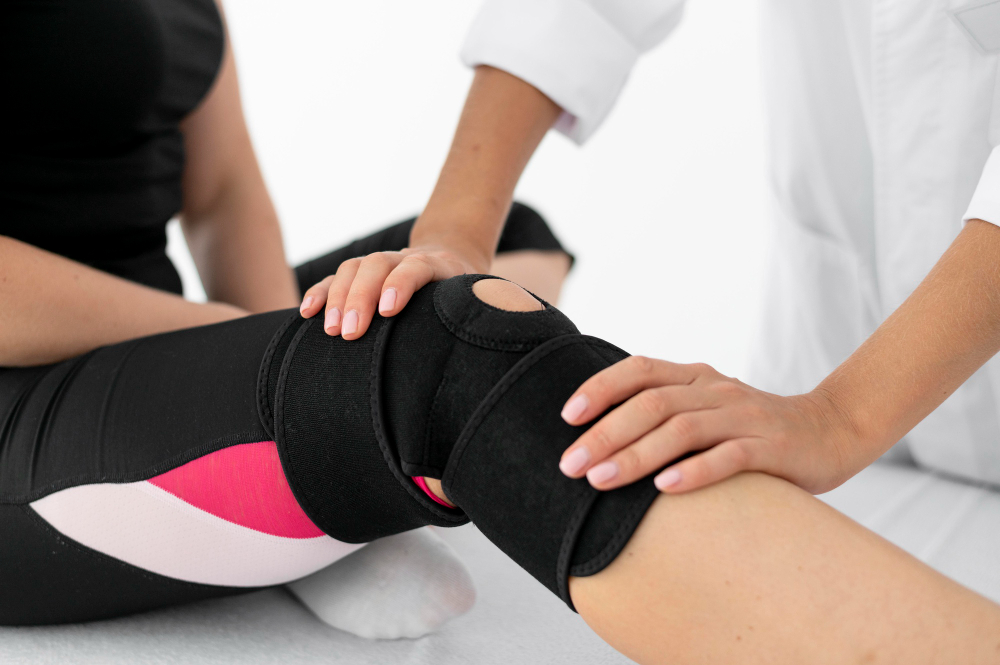
Experiencing an ACL (anterior cruciate ligament) injury can be life-changing. Whether you're an athlete sidelined during a pivotal season or someone navigating everyday activities, recovering from an ACL injury requires a structured approach and patience. If you’ve found yourself searching for an orthopedic surgeon in Altamonte Springs, FL, to guide you through the process, you’re already on the right track toward recovery.
This blog outlines the steps of the recovery and rehabilitation process after an ACL injury, offers tips for successfully managing the road to recovery, and provides insights to help you regain strength, mobility, and confidence.
Understanding ACL Injuries
The ACL is one of the key ligaments in your knee that provides stability during movements like cutting, pivoting, and jumping. An ACL injury often results from sudden stops, twists, or direct impacts, making it a common occurrence among athletes.
Symptoms of an ACL Tear
If you experience any of these symptoms, consulting a medical professional like an orthopedic surgeon is vital:
- A loud "pop" in the knee at the time of injury
- Sudden swelling within the knee
- Instability or a “giving out” sensation in the knee
- Reduced range of motion
- Severe pain that prevents weight-bearing
What Happens After an ACL Injury?
Once an ACL injury is confirmed via physical exams or imaging tests, your recovery process can take various paths, depending on factors like the severity of the tear and your personal activity goals. Treatments generally include non-surgical rehabilitation or surgical reconstruction of the ligament, followed by an intensive recovery program.
If you decide to undergo ACL surgery, having the right orthopedic surgeon in Altamonte Springs, FL, is crucial to ensuring a successful outcome.
The ACL Recovery & Rehab Process
Recovering from an ACL injury is a progressive process that typically spans several months. Here's a breakdown of the different phases of recovery:
Phase 1: Pre-Surgery Preparation
If surgery is required, many patients benefit from prehabilitation or "pre-surgery rehab." This phase focuses on reducing swelling, restoring as much range of motion as possible, and strengthening the muscles around your knee.
Key Goals of Prehabilitation:
- Reduce inflammation and swelling
- Regain full range of motion
- Strengthen the quadriceps and hamstrings to prepare for post-surgical recovery
Phase 2: Post-Surgery Recovery (Weeks 1-4)
The first month after ACL reconstruction surgery focuses primarily on managing pain, reducing swelling, and ensuring proper healing. Careful adherence to your post-surgical instructions is essential for avoiding complications.
What to Expect:
- Crutches or braces to support your knee
- Regular icing to manage swelling
- Physical therapy sessions to start building basic mobility
Your physical therapist will guide you through simple activities like bending the knee and walking with assistance to avoid joint stiffness.
Phase 3: Rebuilding Strength and Mobility (Weeks 5-12)
Once the initial healing is complete, the focus shifts toward strengthening your knee and gradually increasing your range of motion. Controlled exercises, such as leg presses, bridges, and light squats, are introduced during this phase.
Consistency in physical therapy is critical to rebuilding strength, ensuring joint stability, and preventing further injury.
Tips During This Phase:
- Follow your prescribed exercise routine diligently.
- Avoid high-impact activities like running.
- Communicate any unusual pain or discomfort to your therapist or surgeon.
Phase 4: Advanced Strengthening and Functional Training (Months 3-6)
By now, you’ll begin focusing on regaining full strength, stability, and function in the knee. If you're an athlete, this is the phase where targeted sports-specific exercises are introduced.
What This Phase May Include:
- Plyometric exercises like jumps and hops
- Lateral movements to improve agility
- Advanced balance training to stabilize your knee
Patience during this stage is crucial, as rushing back to full activity can lead to setbacks or reinjury.
Phase 5: Return to Play and Full Recovery (Months 7-12)
The process of returning to sports or high-impact activities typically happens after month six. Your orthopedic surgeon and physical therapist will evaluate your knee's strength, control, and stability before giving you clearance.
Key Milestones Before Return to Play:
- Achieving symmetrical strength and range of motion in both knees
- Passing specific functional tests
- Mental readiness to trust your knee during intense activity
Why Patience and Discipline Matter
While you might be eager to return to your routine, rushing the recovery process could increase the risk of reinjury. An ACL tear is a serious injury, but progress is possible when you stay consistent with your physical therapy and listen to expert advice.
How Central Florida Bone & Joint Institute Can Help
If you've experienced an ACL injury and want professional guidance toward a smooth recovery, we’re here to help. At Central Florida Bone & Joint Institute, our skilled orthopedic surgeons prioritize personalized care and use advanced techniques to help you achieve the best possible outcomes.
Whether you need guidance on surgical procedures or an in-depth rehabilitation plan, you can trust our experts to support you every step of the way.
Take the Next Step Toward Recovery
Your ACL recovery is a marathon, not a sprint—but the right support team can make all the difference. If you're seeking an experienced orthopedic surgeon in Altamonte Springs, FL, contact Central Florida Bone & Joint Institute today for more information. Together, we’ll help you get back on your feet and moving confidently into the future.